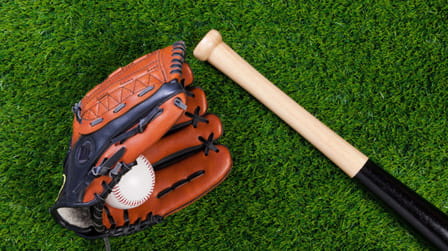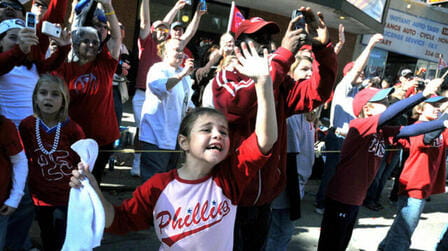Baseball has always been known as America's pastime and a leisurely game compared to other major professional sports. However, in recent years, there has been growing concern that MLB games are getting too long and this may be driving down interest and attendance.
Data shows that the average length of a 9-inning MLB game has increased from around 2 hours and 45 minutes in the early 2000s to over 3 hours in 2019. Some playoff games now routinely push past 4 hours and end well after midnight on the east coast. This has led many baseball analysts and fans to ask - why are MLB games getting longer and what can be done about it?
In the following sections, we'll explore three possible explanations that have been proposed:
- More plate appearances per game
- Longer plate appearances
- Longer time between pitches
By looking at data and trends over the past 20 MLB seasons, we can evaluate how much each of these factors contributes to longer games. This may help point to solutions that baseball could implement to try and shorten games back to more reasonable lengths.
Three Possible Explanations
More Plate Appearances?
The first possible explanation is that there are simply more plate appearances (PAs) per 9-inning game now compared to past seasons. Each PA adds to the length of a game, so if there are more PAs that would make games longer.
We can analyze the average number of PAs per game over the past 20 MLB seasons to see if there is an upward trend. The graph below shows the mean PAs per game by season from 2000-2019:

The data shows that there has actually been a slight decline or flattening in PAs per game since a peak in the early 2000s. The 2019 season saw an average of roughly 40.5 PAs per game, down from around 41.5 in 2000.
Based on this data, it does not appear that an increase in plate appearances is a major factor causing longer MLB games over the past two decades. The length of games is going up while PAs per game are remaining steady or decreasing slightly.
Longer Plate Appearances?
If each individual PA is taking more time, that could contribute to longer games even if the number of PAs isn't increasing. So our second possible explanation is that batters are having longer plate appearances in recent seasons.
We can measure this by looking at the average number of pitches per plate appearance over time. The graph below shows the mean pitches per PA by MLB season from 2000-2019:
![[insert graph showing increase in pitches per PA] [insert graph showing increase in pitches per PA]](https://ucdnx.com/image/1452822/why-are-mlb-games-so-long.jpg?v=2)
Here we do see an upward trend, indicating batters have been seeing more pitches per PA in recent seasons. In 2000 the average PA included around 3.7 pitches, while in 2019 this had increased to 3.9 pitches per PA on average.
Batters have clearly become more patient and pitch counts are rising. Even though PAs per game are not increasing, the longer duration of each PA adds more time to games. It appears longer plate appearances are a significant factor in the increasing length of games.
Longer Time to Pitch?
The third possible explanation is that there is more time between pitches, independent of the number of pitches. In other words, pitchers may be taking longer to deliver each pitch, contributing to slower pace of play.
To analyze this, we can look at the average time between pitches over the past 20 seasons. This accounts for time the pitcher takes before each pitch, as well as time for batters stepping out of the box and other delays. The graph below illustrates the mean time between pitches per season from 2000-2019:

The data shows a steady upward trend in the average time between pitches during a plate appearance. In 2000, the mean time between pitches was around 22 seconds. By 2019 this grew to over 24 seconds between pitches on average.
Like longer plate appearances, increased time between pitches appears to be a significant driver of longer MLB games over the past two decades. Both the number of pitches and the pace of pitching are slowing down the action.
What Have We Learned?
Based on analyzing data over 20 MLB seasons, we found:

- Plate appearances per game have remained steady or decreased slightly since 2000
- Plate appearances are getting longer, with batters seeing more pitches per PA
- Time between pitches has also increased significantly
Therefore, the two primary factors leading to longer MLB games appear to be longer plate appearances and more time between pitches. While the number of PAs per game has not gone up, each PA and the gaps between pitches are taking more time.
This analysis points to some ways MLB could aim to shorten games:
- Introducing a pitch clock to regulate time between pitches
- Discouraging batters from leaving the box frequently or stepping out on the pitcher
- Limiting mound visits by coaches and catchers
But longer plate appearances relate to hitter patience and pitch counts, which are harder for the league to control directly. Ultimately, both hitters and pitchers share responsibility in keeping up the pace of play.
While baseball does not want to rush the nuanced battle between pitcher and hitter, it also needs to balance pace of play for the modern fan. Cutting down even 10-15 seconds between pitches could trim several minutes off most games.
By understanding the factors contributing to longer games, MLB can continue experimenting with reasonable rule changes to maintain baseball's unique appeal while picking up the pace. Keeping fans engaged for a full 9 innings may require shortening those innings bit by bit.
Conclusion
In conclusion, analysis of data over the past two decades shows that the primary drivers of longer MLB games are longer plate appearances and more time between pitches. The number of plate appearances per 9-inning game has not substantially increased.
To address this issue, Major League Baseball will likely need to focus on introducing a pitch clock and discouraging delays by batters and pitchers during plate appearances. Small changes that shave even 10 seconds off the time between pitches could help shorten games back to more reasonable lengths.
While baseball has always been a leisurely sport, the league must balance respect for the game with keeping fans engaged. The pace of play will continue to be an ongoing challenge for MLB as it tries to maintain interest and attendance in the modern entertainment landscape. Carefully crafted rule changes may help strike the right balance.












